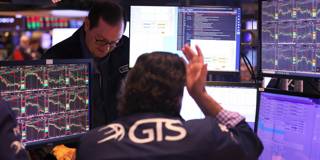In the face of high and persistent inflation, recession risks, and now a looming insolvency crisis in the financial sector, central banks like the US Federal Reserve are facing a trilemma. Unable to fight inflation and provide liquidity support simultaneously, the only solution is a severe recession – and thus a broader debt crisis.
NEW YORK – In January 2022, when yields on US ten-year Treasury bonds were still roughly 1% and those on German Bunds were -0.5%, I warned that inflation would be bad for both stocks and bonds. Higher inflation would lead to higher bond yields, which in turn would hurt stocks as the discount factor for dividends rose. But, at the same time, higher yields on “safe” bonds would imply a fall in their price, too, owing to the inverse relationship between yields and bond prices.

NEW YORK – In January 2022, when yields on US ten-year Treasury bonds were still roughly 1% and those on German Bunds were -0.5%, I warned that inflation would be bad for both stocks and bonds. Higher inflation would lead to higher bond yields, which in turn would hurt stocks as the discount factor for dividends rose. But, at the same time, higher yields on “safe” bonds would imply a fall in their price, too, owing to the inverse relationship between yields and bond prices.